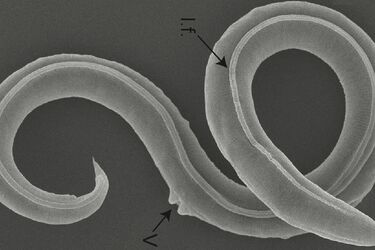They lived with mammoths: Scientists bring 46,000-year-old worms to life

Scientists have recently made a remarkable discovery, reviving long-extinct worms that were frozen more than 46,000 years ago. This unique experiment was made possible by the discovery of a small group of worms at a depth of 40 metres in the Siberian permafrost. It turned out that these worms belonged to the species Panagarolaimus kolymaensis, which had long been considered extinct.
Read also: Scientists explained why cats constantly land on their paws
This was reported by SkyNews. An amazing feature of these worms is their ability to stay in a dormant state known as cryptobiosis. This makes their life manifestations uncertain, and scientists have known that nematodes can stay in this state for up to 40 years.
However, the experiment with the resuscitation of worms frozen more than 46,000 years ago turned the scientists' ideas about the possibilities of cryptobiosis upside down. Such a long survival of nematodes amazed Teimuras Kurchalia, a professor at the Max Planck Institute for Molecular Cell Biology and Genetics in Germany, who shared his surprise.
The scientists were able to resuscitate the worms by providing them with food and water. The discovered group of worms lived for about a month, and during this time they gave birth to more than a hundred generations of new worms. However, the question of the limits of cryptobiosis duration is of great interest to researchers. Answers to this question can provide unique insights into evolutionary processes and help revive extinct species.
This is not the first achievement in the resuscitation of small animals from permafrost. Earlier, in 2021, scientists managed to revive a microscopic animal that had been frozen for more than 24,000 years. This ancient Russian rotifer not only came back to life after hibernation, but also reproduced.
Scientists continue to explore the unique phenomenon of cryptobiosis and find new keys to understanding the evolution and reproduction of extinct species. These discoveries are of great importance for science and the development of new approaches to preserving our planet's biodiversity.
Earlier, scientists found that new species of dangerous birds hide a nerve agent in their feathers.
If you want to get the latest news about the war and events in Ukraine, subscribe to our Telegram channel!
